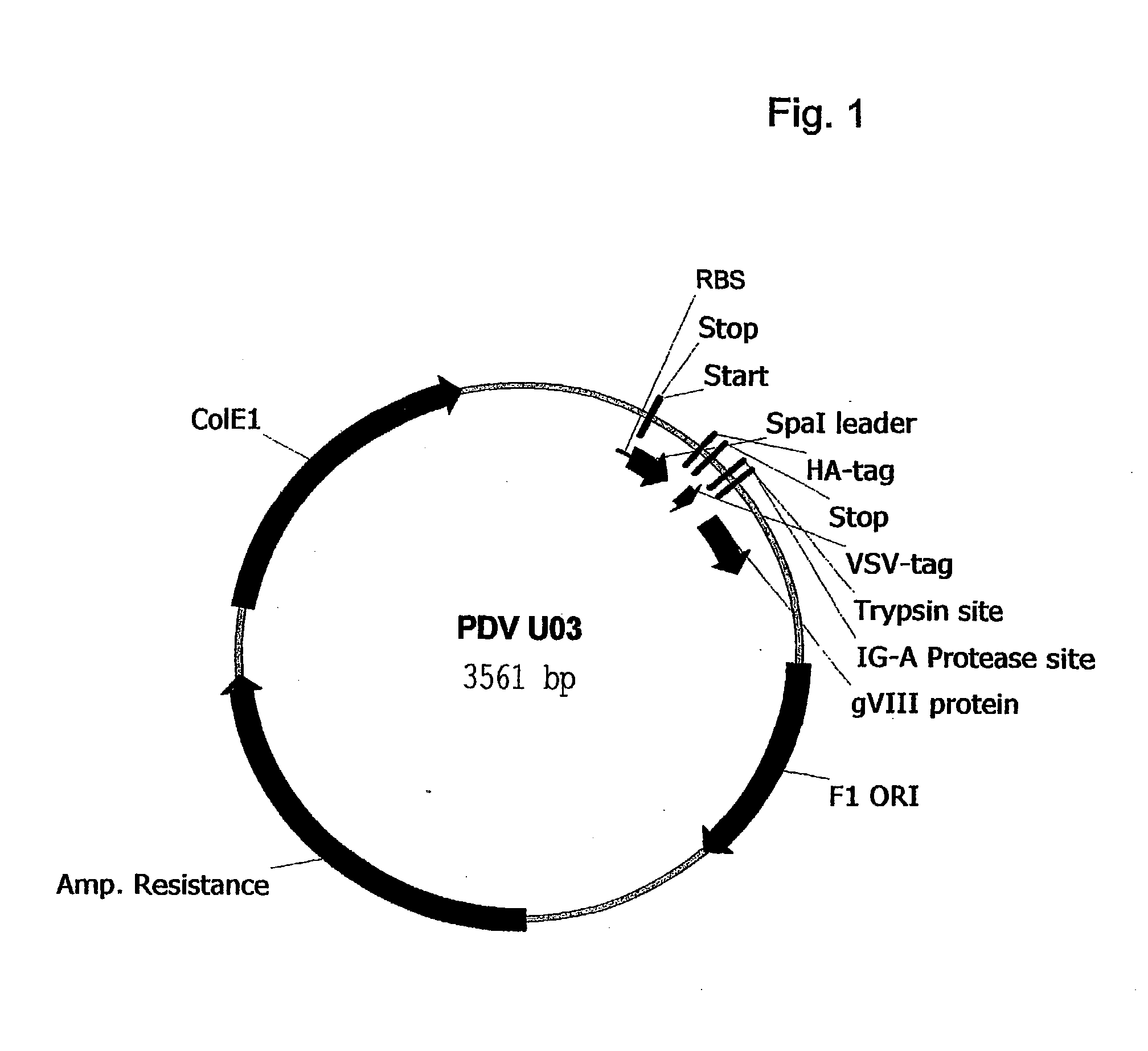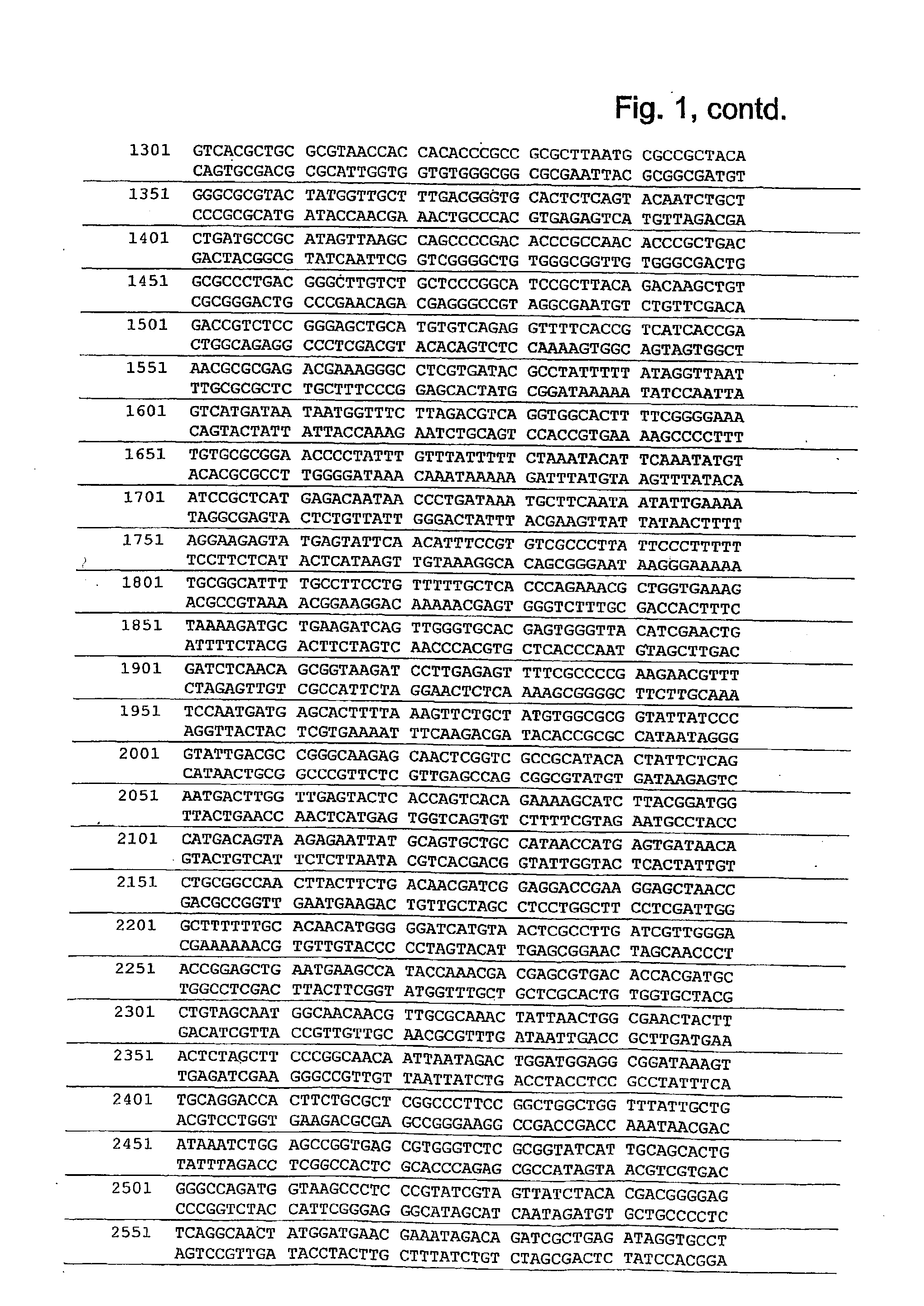Heavy chain libraries
- Summary
- Abstract
- Description
- Claims
- Application Information
AI Technical Summary
Benefits of technology
Problems solved by technology
Method used
Image
Examples
example 1
[0014] Generation of a library of heavy chain variable regions using a soluble variable heavy chain 3 domain (sVH3).
[0015] The phagemid PDV UO3 is the basis vector for generating a library of binding molecules consisting of variable heavy chain 3 domains. A nucleic acid sequence of the phagemid PDV UO3 is given in FIG. 1. Instead of gVIIIp protein in the PDV UO3 vector gIIIp can also be used. The core of the soluble VH3 domain is given in FIG. 2. The dots indicate places, representing CDR1 and CDR2 in an unaltered VH domain, where through varying the amino acid sequence, VH domains of various binding specificities can be obtained. The place marked "CDR3" in the figure, also indicates a place where through varying amino acids, VH domains comprising various binding specificities can be obtained. Of course said CDR3 regions may vary in size, at least according to the natural VH3 size variation in CDR3. By varying the amino acid sequence in the CDR regions it is possible to generate VH3...
PUM
| Property | Measurement | Unit |
|---|---|---|
| Affinity | aaaaa | aaaaa |
| Conformation | aaaaa | aaaaa |
Abstract
Description
Claims
Application Information
 Login to view more
Login to view more - R&D Engineer
- R&D Manager
- IP Professional
- Industry Leading Data Capabilities
- Powerful AI technology
- Patent DNA Extraction
Browse by: Latest US Patents, China's latest patents, Technical Efficacy Thesaurus, Application Domain, Technology Topic.
© 2024 PatSnap. All rights reserved.Legal|Privacy policy|Modern Slavery Act Transparency Statement|Sitemap



